7. The Killer (1989)
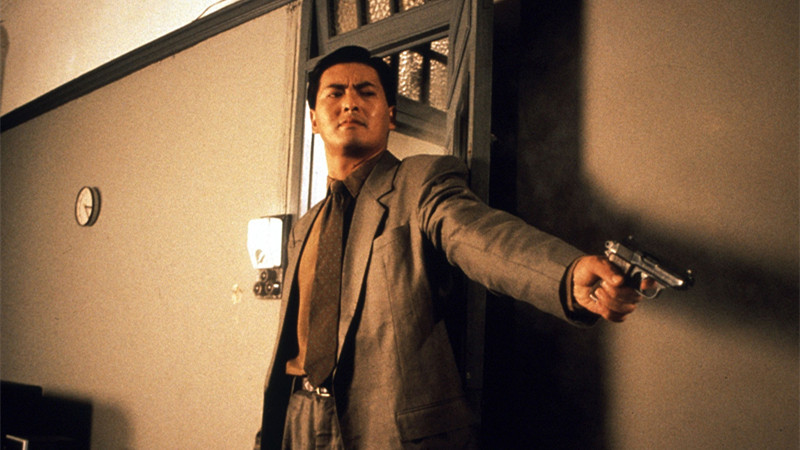
Along with A Better Tomorrow and Hard Boiled, The Killer was the film that put Woo on the map, both in Hong Kong and Hollywood. The film also established Woo’s various motifs in his action films including slow motion, layers of blood, religious motifs, Mexican standoffs and, of course, doves.
Selecting one gunfight from this film could be difficult but the one that stands out is clearly the final battle in the Church. Woo offers up a pastiche of violence. Bullets and sparks fly, bodies and blood drop and realism goes right out the window. Gunshot wounds and explosions are intercut with doves and crucifixes. While titular killer Ah Jong and police officer Li Ying are our heroes, they are not immortal. Gradually, they are torn down by Triad bullets leaving the audience to wonder just how much they can take.
Woo popularised the genre of ‘Heroic bloodshed’, a mixture of strong visuals and themes of friendship, honour and redemption. Quentin Tarantino, Robert Rodriguez and Johnnie To were all inspired by the style but it is still Woo who is remembered as the master.
6. Desperado (1995)
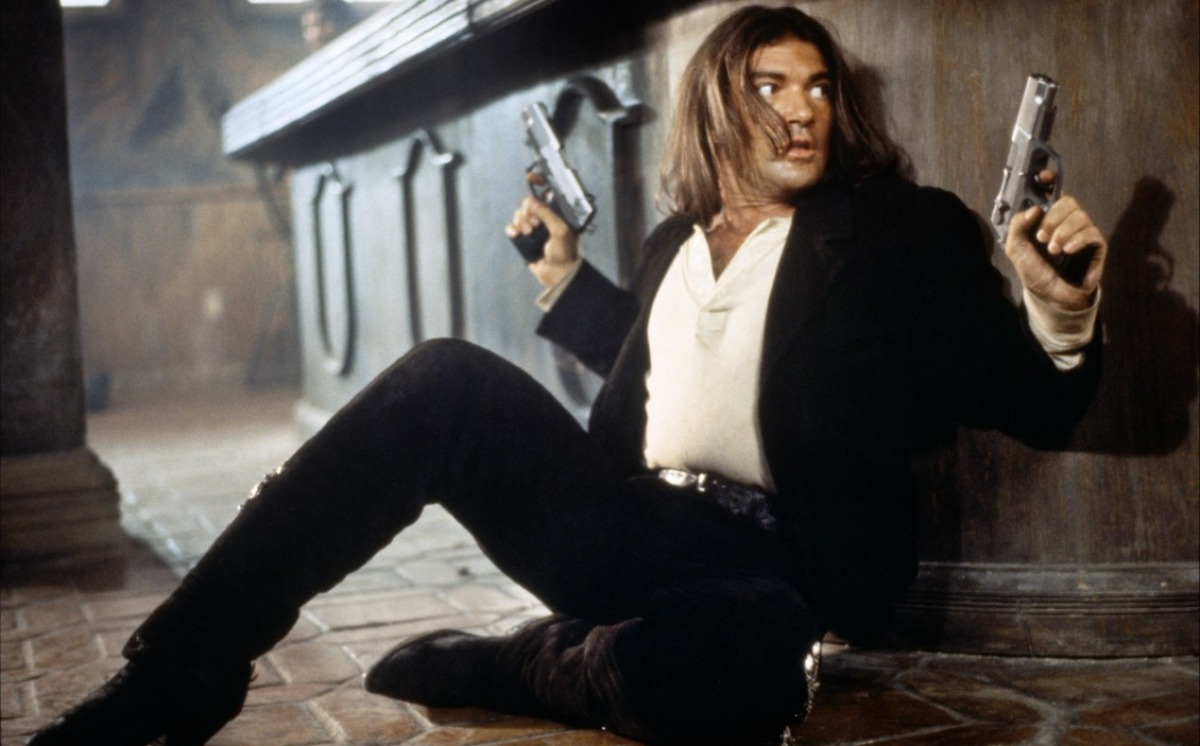
The story of Robert Rodriguez’s debut, El Mariachi, is legendary within the context of filmmakers in the 1990’s financing their own debuts. Rather than pitch the film to studios, Rodriguez raised the $7000 budget by being a test subject in a laboratory, writing the script while in quarantine. However, with a larger budget, more experience and a talented cast, Rodriguez was not only able craft a solid sequel, but give it a memorable gunfight.
Man walks into a bar carrying a guitar case. Bartender asks him what is in the case. This is not the start of a bad joke. Rather it is the start of one of the most exciting gunfights of the 1990’s. The exploits of legendary assassin El Mariachi (Spanish for ‘The Guitar Player’) has been made known to the bartender, a front man for drug kingpin Bucho. Once identified, El Mariachi whips out the duel Ruger KP90’s and proceeds to gundown every henchmen in sight.
Rodriguez elevates the gunfight from a symphony into a ballet. El Mariachi weaves around the bar, taking the term dance macabre to a whole new level. He swings his firearms, held akimbo, around the room, a true master of Gun Fu. Despite the limited geography of the fight, Rodriguez makes perfect use of every aspect of the location.
5. The Wild Bunch (1969)
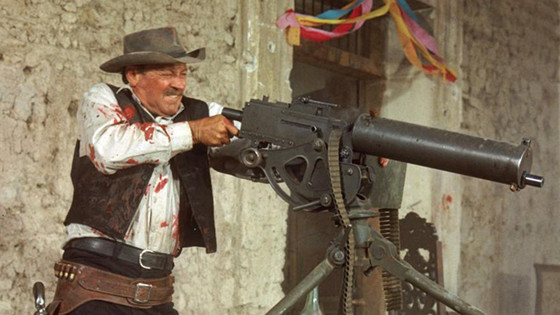
Known for his keen eye for violence and ‘wild child’ idealism that defined the 1960’s, Sam Peckinpah was a director that redefined the Western genre. For decades, the genre enjoyed a conservative angle that never challenged any of the black and white perspectives of the time. Then came along ‘Bloody’ Sam, opening the film with a bank robbery with Hollywood icon William Holden threatening to gun down innocent bystanders.
From there, the audience is drawn into a dark and bloody world as Pike and his men flee into Mexico. From there, they find themselves drawn into the Mexican Civil War, leading them to a showdown against a corrupt General. Starting with the cold-blooded murder of Angel, the gang goes down in a hail of bullets. When the German made machine gun is pulled out, this gunfight quickly becomes a massacre.
Peckinpah’s style was unique at the time. No one had ever shot a action film like him before. Death was in slow motion and the blood was quite liberal, making his films very controversial at the time of their release. However, it is impossible to imagine where action cinema would be without him.
4. The Matrix (1999)
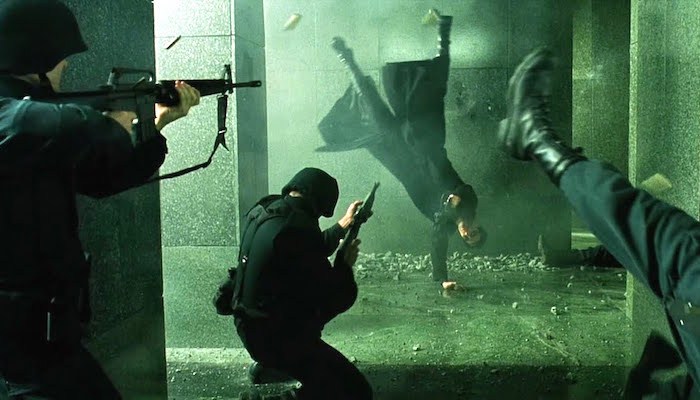
Part philosophy lecture, part dystopian horror, part Alice in Wonderland, part Kung-Fu film, all rolled into one sci-fi classic. The Matrix changed the face of cinema leading into the 21st century, giving audiences hope for the future of cinema and proving that the public was eager for entertaining yet smart films.
While the film was visionary in terms of story and themes, it also revolutionised filmmaking and special effects, including the iconic and frequently satirised bullet time. However, you cannot find anything better than the gunfight in the lobby. That moment Neo opens his trench coat to reveal an arsenal to an unsuspecting security guard? You know something serious is about go down and the Wachowski’s can back it up.
With the wire works and choreography of Yuen Woo-ping and cinematography of Bill Pope, the Wachowski’s have crafted a gunfight that defies reality. In an era where movie action aspires to be as realistic as possible, the sight of our heroes running up walls and dodging bullets is a breath of fresh air. Bullets fly, walls explode, henchmen go down and our heroes look cool while doing it.
3. Scarface (1983)
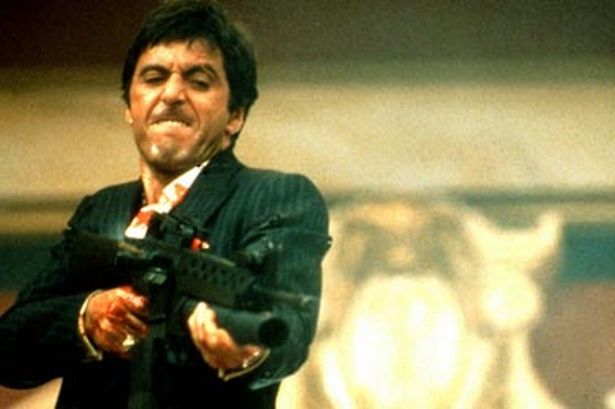
When it comes to last stands, there is a certain standard to adhere to: a hail of bullets, a high casualty rate and the protagonist screaming at the enemy. Brian De Palma’s Scarface not only ticks all these boxes but also dials it up to ten. Initially panned upon its release in 1983, Scarface has since gone on to become a bloody, chaotic cult classic.
All of this praise can be linked back to one key scene: the final gunfight. Tony Montana has finally lost his mind: He is addicted to his own cocaine, he murdered his best friend in a fit of rage and having witnessed his own sister gunned down, we know this is not going to end well. Once a hopeful Cuban refugee hoping to discover his American Dream, Montana gradually made the transition from anti-hero to villain. Still, it was a entertaining ride.
Now surrounded by an army of gunmen, Montana arms himself with an assault rifle and a grenade launcher and proceeds to gun down as many as he can, screaming obscenities, both in English and Spanish. Of course, nothing beats Montana’s entrance, calling “Say ‘ello to my little friend!” before launching grenades. He may not make it, but what a way to go out.
2. Heat (1995)
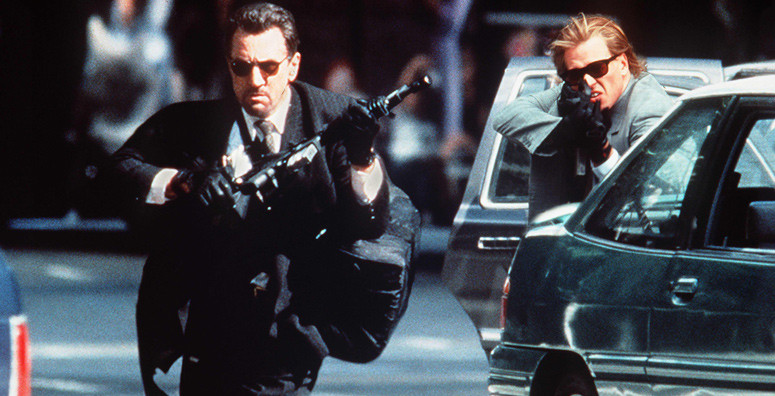
Quite possibly the most ambitious gunfight ever created by Hollywood, Michael Mann holds nothing back in his depiction of a gang of bank robbers in modern Los Angeles, especially in the film’s iconic second act gunfight where cops and robbers exchange fire in the middle of an LA street.
Mann had previously attempted to bring the crime epic to the screen back in 1989 with L.A. Takedown but that was just a warm up. Patience is a virtue, especially with a filmmaker like Mann as he pours everything he knows about filmmaking into this crime epic masterpiece, including the importance of tension. We watch as the gang exit the bank one by one, each carrying a bag of cash and a M1A4 assault rifle. Prowling down the street is a team of detectives, hoping to avoid a gunfight.
Of course, shots are fired and the busy street suddenly turns into a warzone. Mann is not afraid to let the bullets fly or let them hit their targets with police and even innocent bystanders going down. The scene is not only exciting and visually spectacular, it is vital to the story. It puts both lead characters on a collisions course with one another: Detective Vincent Hanna determined to catch them after his partner is gunned down and criminal Neil McCauley eager to find the man who betrayed his team.
1. Hard Boiled (1992)
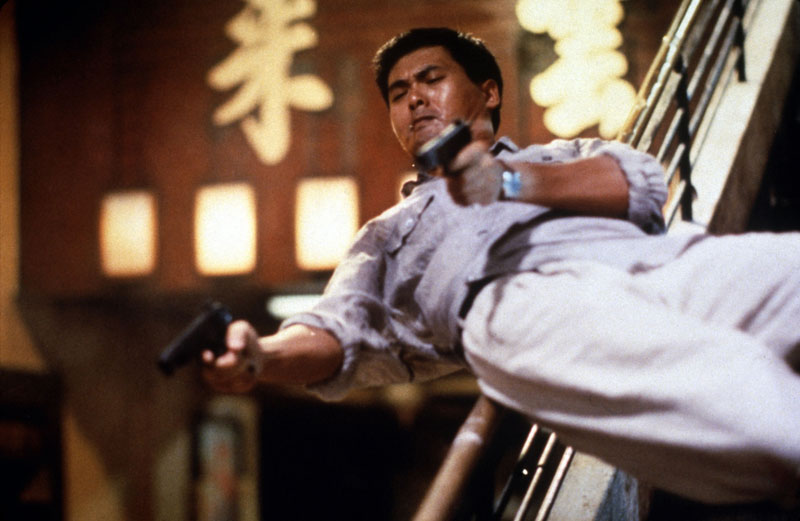
It would almost be sacrilegious not to have the master of action at the top of this list. John Woo became a legend for his work in Hong Kong before taking the opportunity to work in Hollywood where, unfortunately, he was unable to make the same masterpieces he crafted back home (with the possible exception of Face/Off).
There are numerous scenes to pick from in Woo’s filmography, however, nothing matches the excitement, carnage and sheer audacity of the hospital gunfight from Hard Boiled, a single take long shot that follows police officers ‘Tequila’ Yuen and Alan as they storm a hospital occupied by Triad gunmen.
The single take long shot has been utilised by several cinema greats including Stanley Kubrick (Paths of Glory), Martin Scorsese (Goodfellas), Alfonso Cuaron (Children of Men), Joe Wright (Atonement), Orson Wells (Touch of Evil) and Park-Chan Wook (Old Boy), all for different effects. For Woo, it is all about carnage.
Walls explode, blood splatters and henchman fly through windows. All of this already hard to enough to do without the constraint of a single camera following the heroes with no cuts. The production team was forced to re-build the set during the elevator scene, giving the illusion that Tequila and Alan were fighting on another floor of a hospital. This fact not only shows the ambitious vision of Woo as a director, but the dedication and hard work of his entire crew.